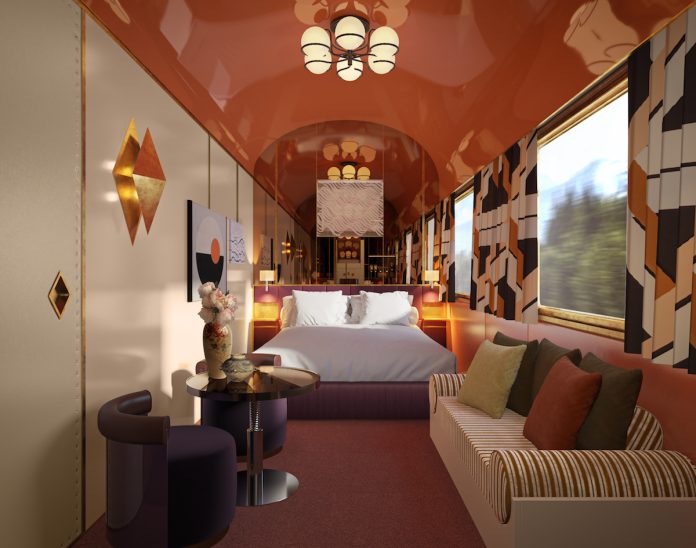In December came the announcement of the project Orient Express La Dolce Vita, based on partnership between Arsenale and Accor and slated for 2023. It soon made the rounds of the web, also because of the talents involved in the making of the six rail cars in question: Dimorestudio. Today Emiliano Salci and Britt Moran, the studio’s founders, get into the details.
The style will be an erudite, eclectic mixture of references, from the 1950s to the 1970s, with tributes to personalities that represent key figures for Dimorestudio: Gio Ponti and Osvaldo Borsani, but also Nanda Vigo and Gae Aulenti. Each train will have its own stylistic approach, based on the itinerary to be covered, from the north to the south of Italy.
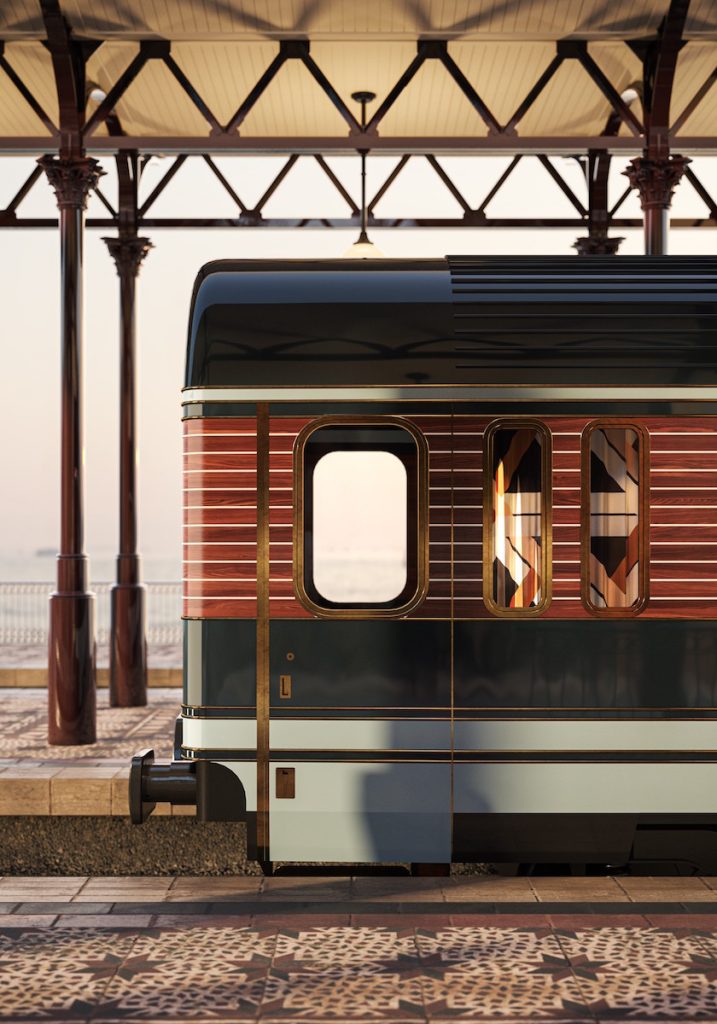
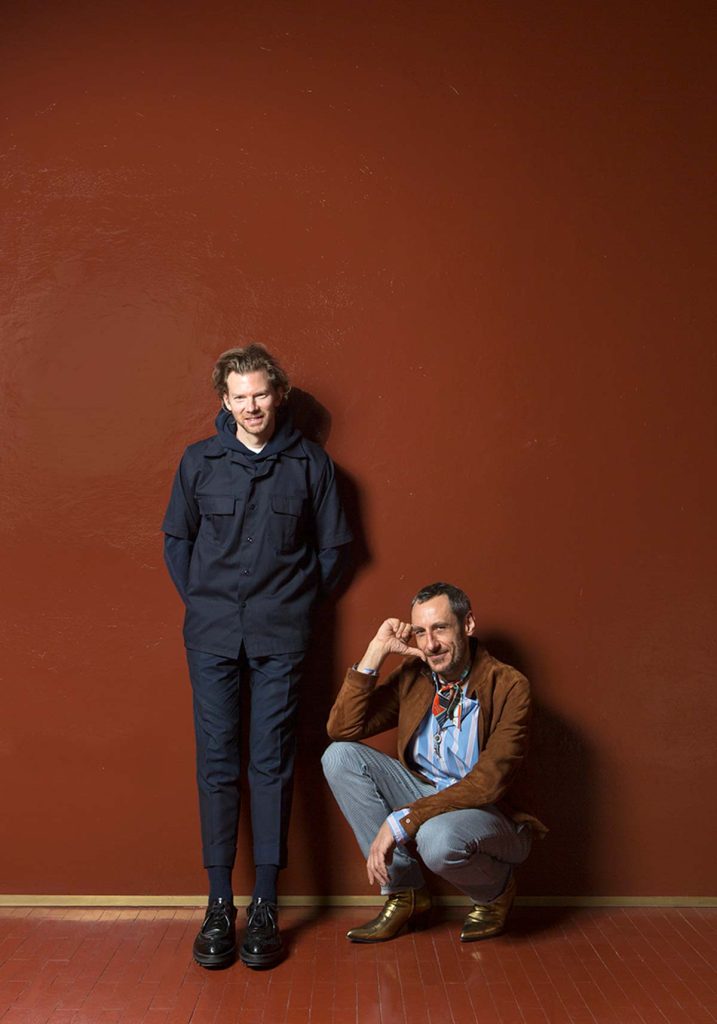
Every train has communal areas (a lounge car with welcome/reception and bar zones, as well as a dining car), 12 deluxe rooms and 18 exclusive suites, plus a Suite of Honor.
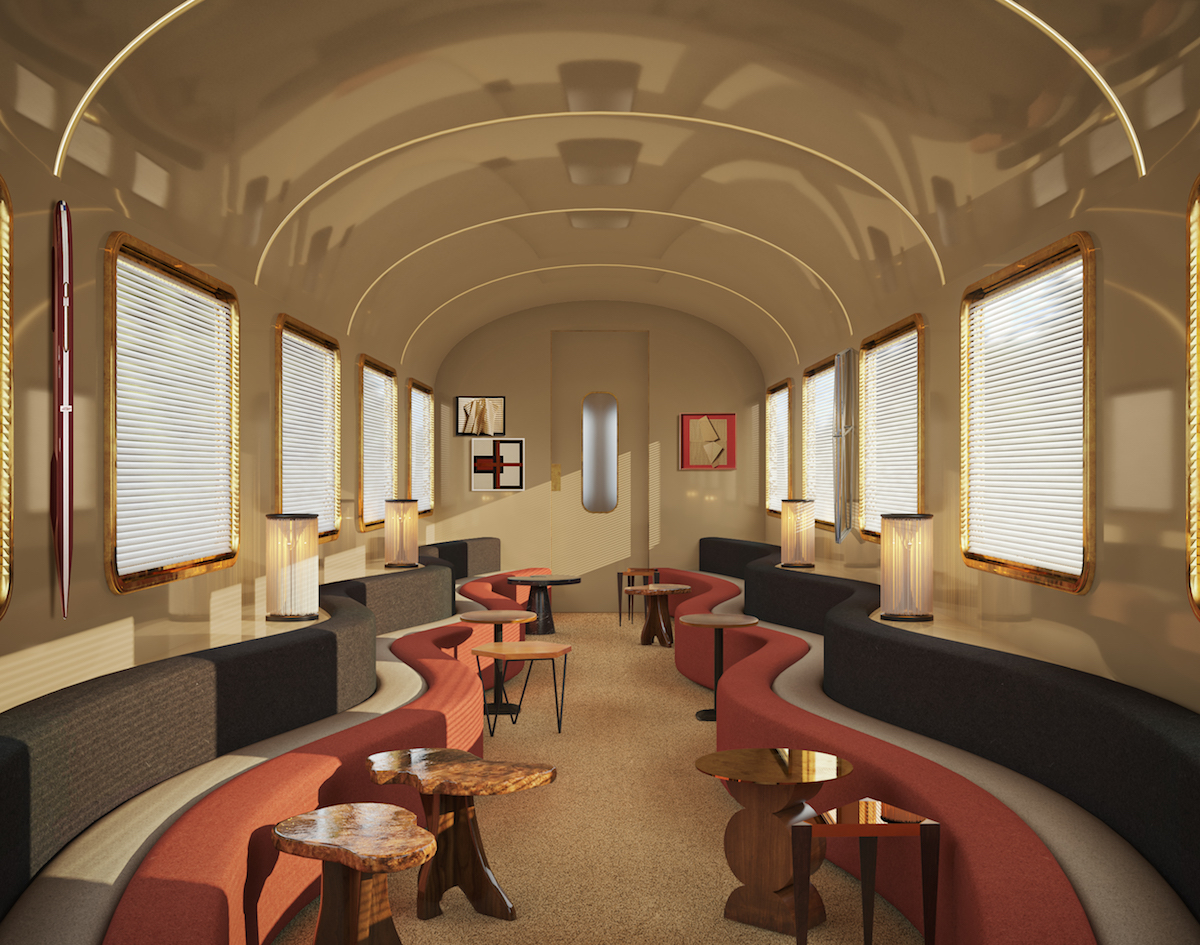
In the lounge the ceiling will have glossy stripes, bordered by luminous crevices: the indirect lighting will create a warm, soothing atmosphere. The walls are decorated, the furnishings and complements layered in a palette of beige, buttery white, warm orange and camel tones.
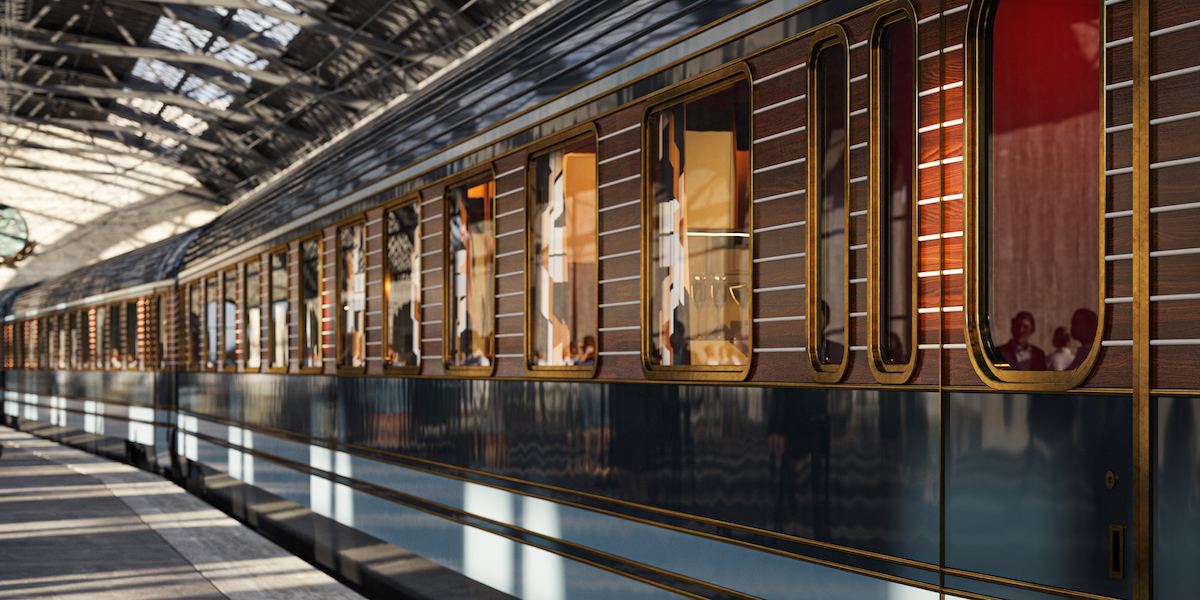
For the restaurant, sage green walls surround an eclectic layout: the main corridor is shaped by the arrangement of the tables. The colored bands of the floor also contribute to generate an idea of movement.
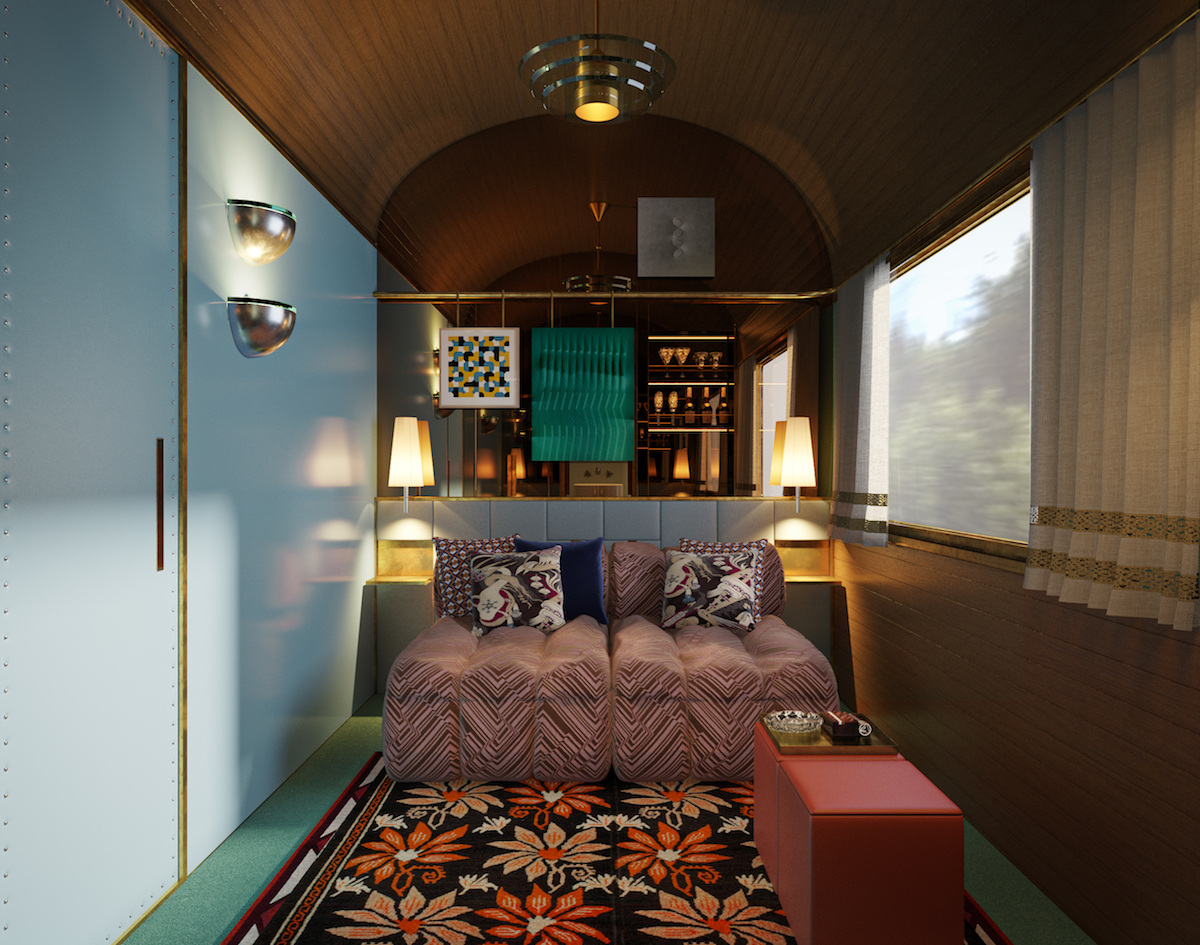
The suites (with double or twin beds) all contain a sofa, armchairs and a table, with drapes in Dimoremilano fabrics and lamps by 20th-century masters of design. The furnishings feature warm orange, terracotta and violet hues, set off by brass finishing; the volumes are expanded thanks to antique-look fumé mirrors.
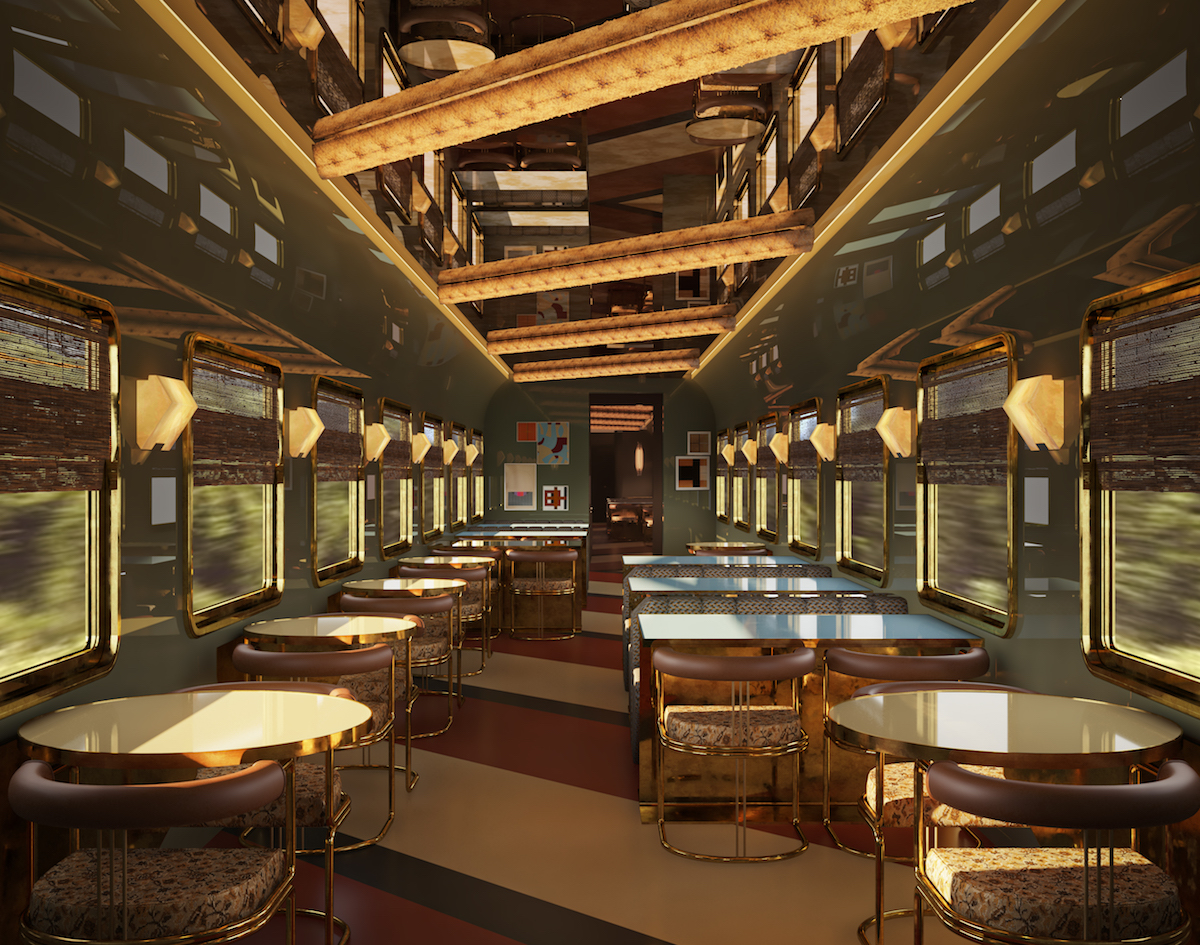
The deluxe cabins also feature mirrors, in a cooler range of colors with respect to the suites. Here the décor includes a sofa that can be transformed into a double bed, with ottoman storage units that function as tables and seats.
The key for interpretation of the whole project is the desire to create an evocative atmosphere, as in the great trains of the past. “All the parts fit perfectly together, generating a sense of profound belonging to the context,” say Emiliano Salci and Britt Moran. “With a game of layers to make everything even more sophisticated.”

